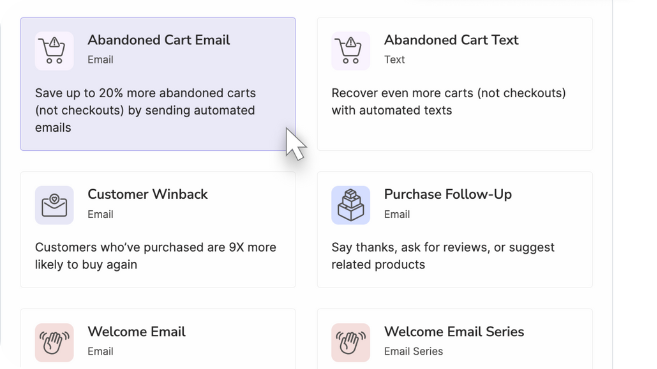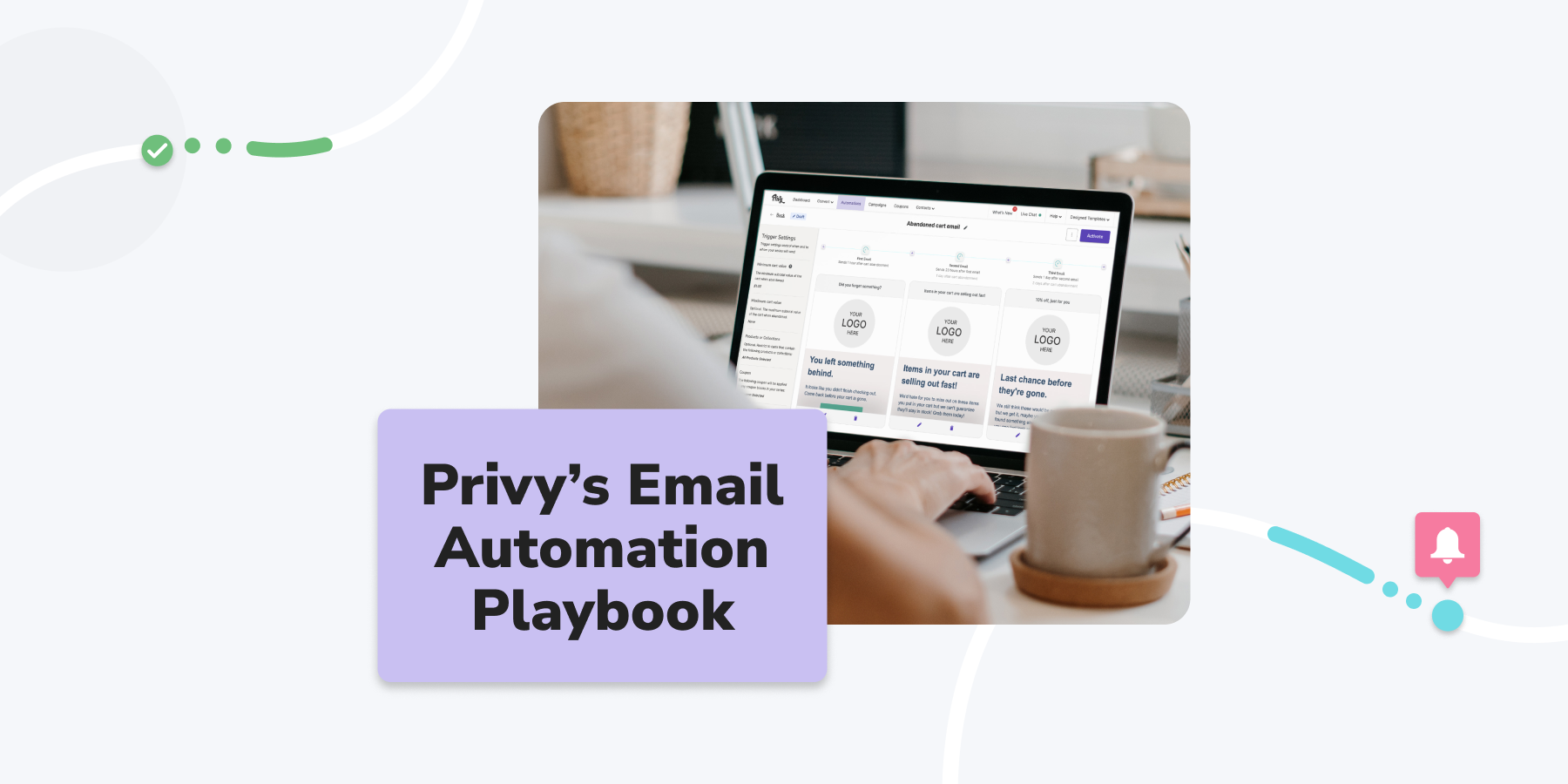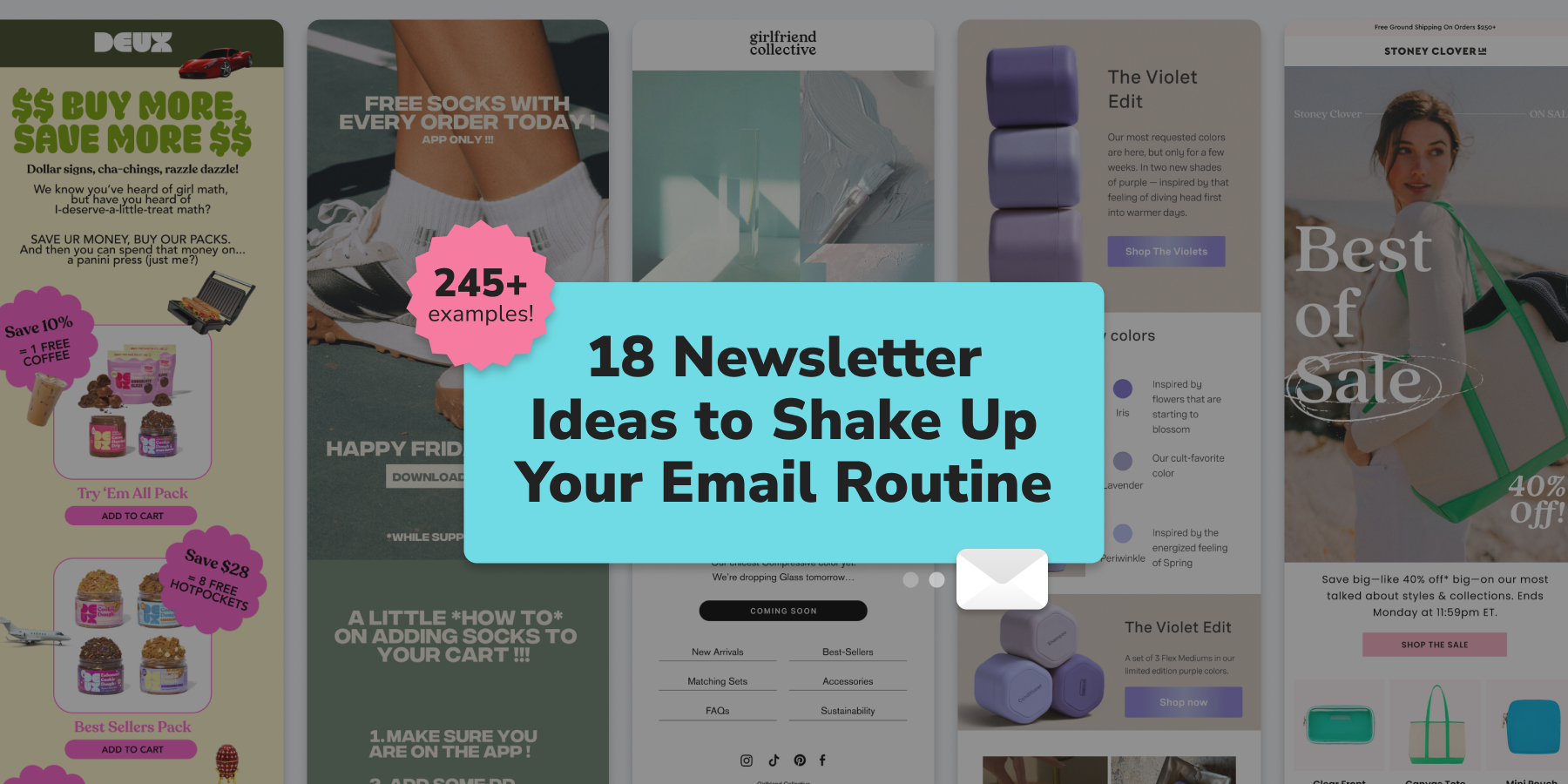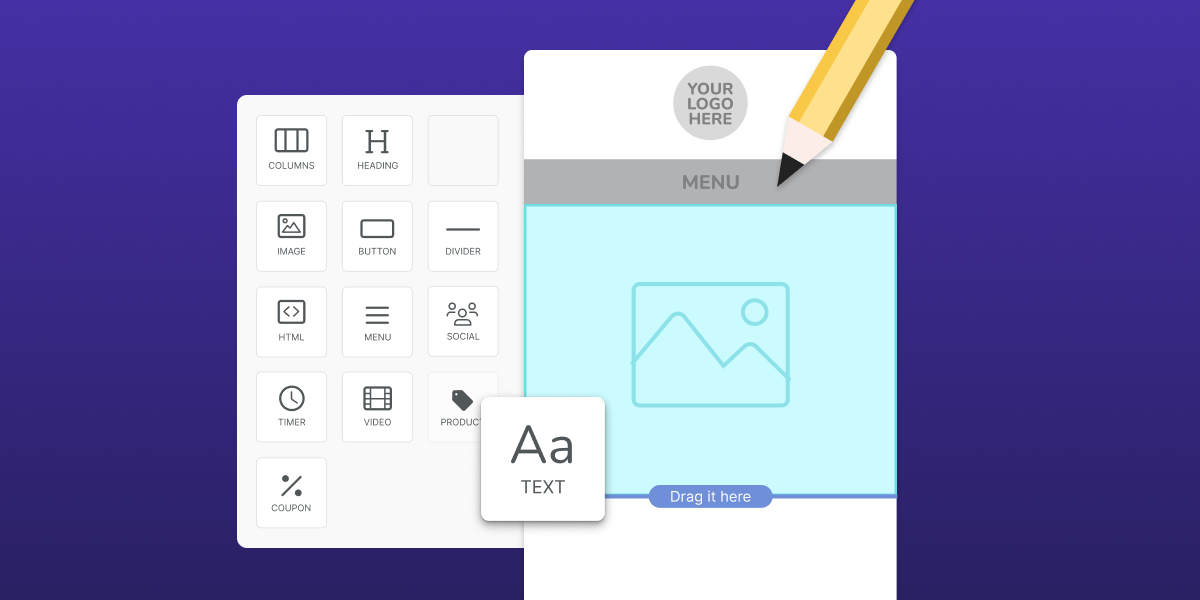A Guide To Warming Up Your Sending Domain With Privy
9 min read time
Published on Feb 9, 2022
Written by Jess Iocca
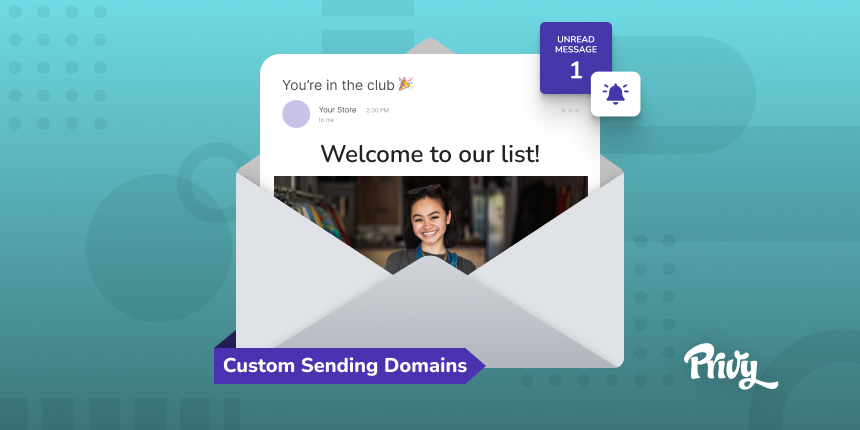
You’ve built your list and added your custom sending domain to your Email Service Provider (ESP).
Now you’re ready to start sending emails out to your list, right?
Not quite...
When you’re first getting started with your custom sending domain, you need to be careful not to overdo it. Especially in the first couple of weeks.
It’s best practice to dedicate a couple weeks to warming up your sending domain.
So you can build a strong foundation that keeps you out of spam folders and top of mind for an engaged audience for the long haul.
Get our best content on ecommerce marketing in your inbox 2 times a week
What is the warmup process?
Since you haven’t been sending emails from your custom domain, there’s no history for inbox service providers (ISPs) to look back on that signals that your emails can be trusted.
So if your new custom domain is suddenly sending a bunch of emails, it’s going to raise some red flags for ISPs.
This can hurt your email deliverability rate and set you back before you’ve really had a chance to get going with email marketing.
Think of the warmup process as walking before you run.
You wouldn’t try to run a marathon without training for it (and if you did, you’re much more likely to injure yourself).
Running a successful email marketing program is surprisingly similar.
Sending tons of emails to all of your contacts as soon as your sending domain has been verified can actually hurt your email deliverability.
And when your email deliverability suffers, so can your sales.
Instead, it’s best to take careful, deliberate steps early on to build up your reputation with ISPs.
Because the more that ISPs trust your emails, the more likely you’ll end up in your contacts’ inboxes and not the dreaded spam folder.
And more emails in inboxes = more opportunities to drive sales for your store.
In general, you want to dedicate 2-4 weeks to warming up your domain.
Here's a guide to help you get started.
1. Start with high engagement email automations
Warming up your domain is about sending the right emails that will help boost your sending reputation right off the bat.
And those are the emails that will drive high engagement from your contacts.
Because when your contacts open and click your emails, it’s a strong indicator to ISPs that you’re sending emails your contacts are actually interested in.
And, in turn, ISPs are encouraged to keep your future emails out of the spam folder.
So to start, we recommend activating two key email automations in Privy:
Your welcome series and your abandoned cart series.
(Quick reminder – make sure to disable any preexisting abandoned cart emails you have in place before activating your series in Privy!)
We recommend activating these on the first day you begin using your custom sending domain.
Typical marketing emails tend to see average open rates of about 21% and click-through rates around 2%.
But welcome emails and abandoned cart emails are a little different...
Since your welcome emails are designed to be delivered when your brand is still top of mind soon after a contact signs up for your list, your contacts are much more likely to open these emails.
And abandoned cart emails are triggered for shoppers who add items to their cart but leave your site without completing the purchase.
Which means that they are already interested in what you have to offer, so when your abandoned cart reminder comes through, they’re more inclined to click.
So you can expect strong engagement with these two email automations.
Just check out this brand’s welcome series engagement:
And the engagement on this brand’s abandoned cart series:
Once these automations are activated in your account, they’ll work 24/7 to not only help warm up your domain, but also start driving sales for your store.
You’ll want to let these run for 3-7 days to start building your sending reputation with ISPs.
During this period, it’s best to avoid sending one-off emails, like newsletters, to your whole list, especially if you have more than 10,000 contacts.
But don’t worry, you’ll be able to send out these types of emails soon.
2. Send to your engaged segments
After your high engagement email automations have been up and running on your custom domain for at least a week, you can take your warmup process to the next level with newsletters.
Keep in mind that your new custom sending domain is essentially a clean slate.
So what you do early on can have a significant impact on your sending reputation.
That’s why it’s important to send your newsletters to your highly engaged segments so start. This helps prevent a below-average performing newsletter from damaging your email deliverability.
New custom domain, but not new to Privy
If you’ve been using Privy for a while, but are now just getting started with your custom domain, your contacts’ engagement data is already stored in your Privy account.
Every email sent, delivered, opened, and clicked is stored on each individual contact’s profile in Privy.
This information gives you tons to work with when it comes to getting started with email segmentation on your custom domain.
For the purposes of warming up your new domain, it’s best to segment on email engagement for your first few newsletters.
And the simplest way to do this is to focus on contacts who’ve engaged with your emails recently.
If you were using Privy for email before you set up your custom sending domain, you can build a list of all your email contacts who opened one of your emails in the past 30 days.
Use the “opened” email engagement filter in the custom segment builder and select 30 days for the time frame.
This will filter out any inactive contacts, or contacts who haven’t opened your emails in the past 30 days, and increase your chances of getting high engagement for this newsletter.
New custom domain and new to Privy
If you’re completely new to Privy and new to your custom sending domain, your approach will be slightly different.
You’ll still want to start with your welcome series and abandoned cart series.
After these automations have been running for at least a week, you can start to introduce one-off newsletters into your repertoire.
Because you're new to Privy, you likely won’t have a ton of email engagement data on your contacts.
Instead, you can segment your newsletter based on your recent signups.
Start with filtering down on contacts who signed up for your list in the past two weeks.
You can do this by selecting “sign up date” in Privy’s custom segment builder and setting the appropriate date.
This will capture all of your contacts who signed after the specified date.
And because these contacts recently signed up for your list, they’re expecting to hear from you.
So when they see your newsletter in their inbox, they’ll be inclined to open and click.
You can also use an email engagement filter for the purposes of warming your custom domain if you’re new to Privy.
You’ll just want to narrow your scope from 30 days to 7 days since you likely won’t have engagement data dating back 30 days.
Use the “opened” email engagement filter in the custom segment builder and select 7 days for the time frame.
This filter reflects email opens across all of your email types.
Which means that contacts who opened the welcome series and abandoned cart emails you activated when you were first getting started will be included in this segment.
As a general guideline, you’ll want to aim for a 30% open rate or higher for your first newsletter send on your custom domain.
That’s why focusing on your engaged segments or recent subscribers is so critical at this stage.
These are the contacts who want to hear from you the most. Which means they're the most likely to drive the positive engagement that tells ISPs your domain is one to trust.
Plus, the more engaged the contact, the more inclined they are to buy.
So you’ll be warming up your custom domain and driving sales at the same time. It’s a win-win.
Keep your newsletters focused on these segments for a couple weeks so that you can establish a strong reputation with ISPs.
If your newsletters are consistently driving open rates of 20% or higher, you can start to introduce different custom segments, like the 30-day engagement segment described above, and additional email automations, like customer winbacks, into your sending schedule.
So as your list grows, you can trust that your emails are getting in front of your new subscribers and your high intent contacts.
3. Monitor your performance
Every email you send with Privy includes both a delivery report and engagement report.
Your delivery report tells you just how many emails were sent and successfully delivered to your intended recipients. No guesswork involved.
You can also monitor how many of your emails bounced or were rejected by the intended recipient. That said, you can expect these numbers to be well below 1% since you’re targeting your most engaged contacts.
Your engagement report gives you a closer look at how many of your contacts opened and clicked on your email.
It will also tell you if any contacts unsubscribed after receiving your emails, or reported your email as spam.
But if you’re following best practices and sticking to your engaged contacts as you're warming up your domain, these numbers should be very low.
With these two reports, you’ll have a ton of insight into how you’re tracking in terms of email deliverability and how your emails are performing with your contacts.
And you’ll be running a robust email marketing program on your custom sending domain in no time.
Get started with your custom sending domain
The first step to strong email deliverability is setting up your custom sending domain.
So if you haven’t already, spend 5 minutes getting your custom sending domain set up in your Privy account.
This video will guide you through the process step-by-step.
And once you’re all set up, use this guide to warm up your domain.
Subscribe for Updates
Get our best content on ecommerce marketing in your inbox 2 times a week.

Written by Jess Iocca
Jess joins Privy after completing her MBA at Boston University, where she specialized in marketing and social impact. She loves introducing her family and friends to small businesses and emerging brands, and is thrilled to put that passion to work at Privy. Outside of work, you can find Jess organizing her virtual book club and exploring new restaurants. Jess lives in Boston with her husband and their cat, Phoebe.
Subscribe for Updates
Get our best content on ecommerce marketing in your inbox 2 times a week.

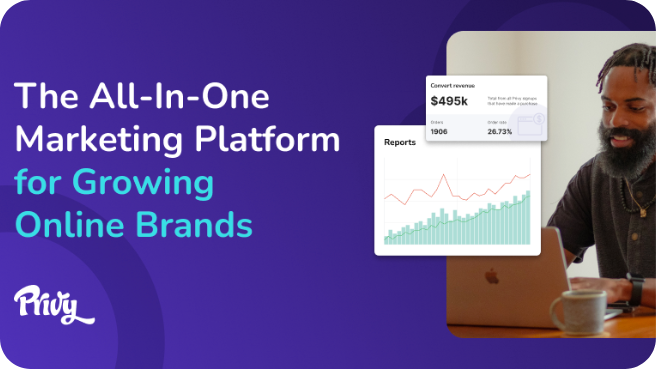
.jpg)
